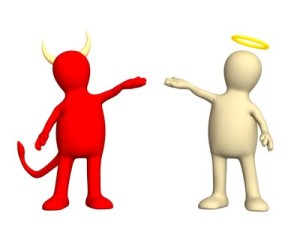Jul 7
Halo Effect
Norman Schwarzkopf said the role of the leader is to tell the truth – don’t make the situation better or worse than it is. His advice refers to a cognitive bias that many of us will experience called the “halo effect”. Our overall impression of a person, company, product, or brand is influenced by what we think or feel about the entity’s character or properties.
For example, a study by Landy and Sigall (1974) showed how the halo effected judgments about intelligence and competence. Sixty male undergraduates were asked to rate a poor writing sample. They were divided into three groups; one group was shown a picture of an attractive female author, the second group saw a picture of an unattractive female author, and the third group or control group was shown neither.
The readers gave the physically attractive author the benefit of the doubt by rating the attractive author’s performance higher than the other two groups. The attractive author received a 5.2 on a 1 to 10 scale, the control group received a 4.7, and the unattractive author received a 2.7.
The halo effect is also used in the field of brand marketing. Subway’s brand image as a provider of “healthy” food leads people to underestimate that actual caloric content of its dishes (Chandon & Wansink, 2007).
The reverse of the halo effect, called the devil effect, also influences our evaluations. Some people can become so demonized that his or her achievements and failures are not assessed in a balanced way.
Therefore as a leader, it is important to avoid the halo effect by telling the truth. A member of your team may not be as good as you think, nor are they as bad as you think. You can avoid the halo effect by considering all areas of their performance and not just focusing on what went well or their shortcoming.
As Norman Schwarzkopf advises, tell the truth. And the truth is easier to see when you are vigilant about how the halo or devil effect may be influencing your perspective.
References:
Chandon, Pierre; Wansink, Brian (2007). “The Biasing Health Halos of Fast-Food Restaurant Health Claims: Lower Calorie Estimate and Higher Side-Dish Consumption Intentions”. Journal of Consumer Research 34 (3): 301–14.
Landy, D; Sigall, H (1974), “Task Evaluation as a Function of the Performers’ Physical Attractiveness”, Journal of Personality and Social Psychology 29 (3): 299–304
